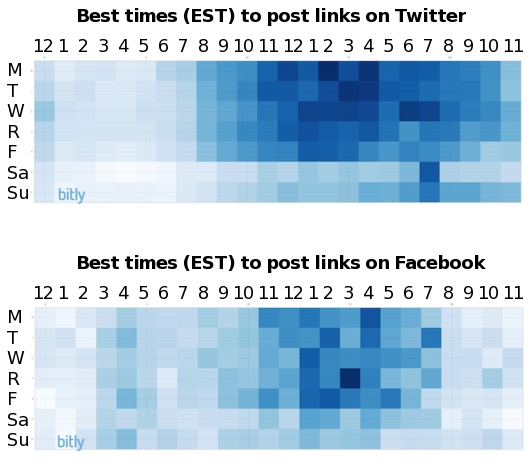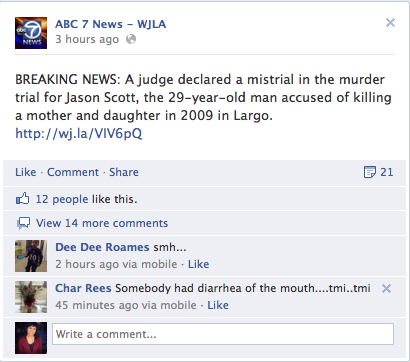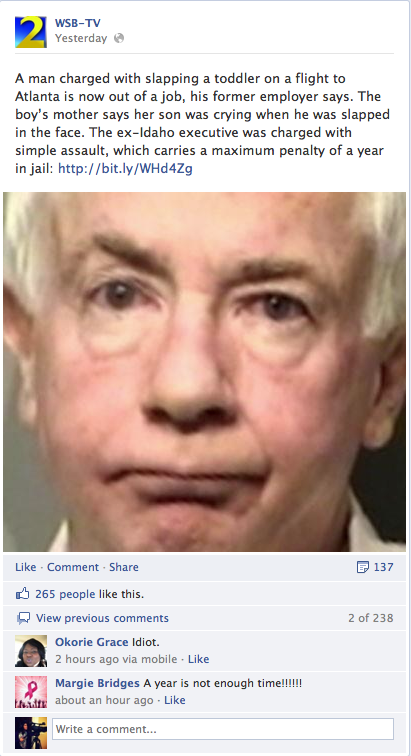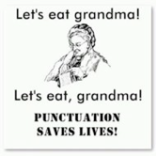Archive
LSW 9: Twitter over Facebook
At this point, I don’t not plan to recommend any new social media platforms for WTVM Newsleader 9, but instead, offer advice about how to maximize the strategies for the platforms they already use. They already have active Twitter and Facebook accounts, but the strategy does not match the social media business equation… yet!
At first, my advice was going to focus primarily on Facebook, with Twitter as a secondary platform. However, the chart below, which I also posted last week, reveals that Twitter has much more peak times of traffic when tweeting reaches the largest audience. Therefore, my plan is now to focus primarily on Twitter with Facebook as a secondary platform. This actually doesn’t change much about the Facebook strategy because of the way Twitter allows users to link their tweets to Facebook, so that they also show up as Facebook status updates.

source: http://www.journalism.org.
Content must be a little more fluid and flexible than the social media business equation, because the goal is to post important news updates. It would not be beneficial to stop tweeting informative updates just because a certain quota has been met for the day. So while the specific mix for WTVM is strong on information and converting to business (opportunities to visit the website), more attention can be given towards entertaining (positive, feel-good stories or stories about entertainment), and interacting (responses, polls, topic debates, etc.).
LSW 9: Successful ways to Maximize your Twitter Presence
I have chosen to utilize Twitter as a means of convenience, speed, and as an easy way to keep the members of Cougars for Christ informed, entertained, and communed with each and every day. In the article, “Be the Best at What, When, and How You Tweet,” the reader is given a list of 8 ways that they can be successful in converting to business on Twitter. I also compared Mars Hill Church’s (one of the fastest-growing, multi-campus churches in the United States) Twitter page with the guidelines written in the article. Because of their large success, I thought that they would be a good candidate to compare the success of their “business” with the success of their Twitter following. I found that their page met nearly every single step listed in the article. Some of the most important suggestions included “Creating Tweets that resonate,” “Keeping Tweets short and sweet,” “Tweeting often,” and “Following your interests.” Mars Hill Tweets often about subjects that their audience (Christians) will find resonating and meaningful. In addition, they also keep their Tweets very short. The article suggests that a recent study found that “Tweets shorter than 100 characters get a 17% higher engagement rate.” The length of Mars Hill’s Tweets are about this long or shorter and contain highly engaging content, often including links to graphics, sermons, and videos. The number of suggested daily Tweets ranged from 3-4. Mars Hill’s Tweets follow this guideline, and they also follow their members and potential members, fulfilling the articles requirement of “following your interests.” This article was very insightful when implemented within a church’s Twitter account, proved to be very successful.
Word Count: 274
LSW 8: Creating a Marketing Plan for a Ministry
The one thing I have learned repeatedly regarding this project (that I had neglected to recognize before) is that church and ministries must market. Though many do seek to increase their size, financial status, and reputation, ministries should be seeking to market their own assistance and resources to the public. By using social media, churches can gain the interests of their followers and in turn, meet their needs. I have found two articles that lay out both a general social media plan and a plan that is specific to Twitter for churches to follow. In the first article, “5 Step Plan for Social Media Ministry,” John Saddington reviews the fundamental basics that one should know both before and during their social media endeavors. The five steps include: Knowing your audience, choosing your platforms and people, do it, get off of the computer, and metrics. The article, though basic, suggests that the administrator do all of the aforementioned in order to maintain a successful social presence and through this, will yield knowledge of the community, congregation, traffic increases and decreases, relationships within the congregation, etc.
The next article, “A Social Media Strategy: Twitter” shares a more in-depth coverage of the reasons behind using Twitter to reach an audience and how it can be done. The part of the article that I found most engaging, however, was the part that was reserved for the author to give examples of their own personal “Twitter goals” for their ministry. They included: “Gain 300 followers a month with a target audience of active users who have similar interests and do not follow too many other people, Sponsor six Tweet chats through various partnering ministries, like YouthMin.or, and Make at least 50% of tweets some sort of free resource or conversation starter.” I found both of these articles to be great resources in creating a social media plan for my own campus ministry.
Word Count: 318
LSW 7: Appropriate Rhetoric for Campus Ministries on Twitter
I chose to analyze Notre Dame University’s campus ministry’s Twitter page for insight into the appropriate language projections for my authentic client, Cougars For Christ. I was surprised to find that their site’s posts were written in neither Standard Edited American English, nor Standard Academic English, but a tasteful mixture of the two. Never once did I note any grammatical errors in their posts. The poster’s authority remained intact, due to their upholding of conventional grammar practices and language usage; however, they were still able to present the information needed by using shortened versions of sentences and acronyms that are prevalent in Social Media (such a Facebook and Twitter) jargon. For instance, one post reads, “Our first Freshman Retreat of 2013 was a huge success! If you haven’t gone, be sure to register 4 the March retreat!” The purpose of using “4” in this instance instead of “for” was to shorten the message, allowing it to fit within the “tweeting” parameters. Normally, this would bother me, but since the site’s administrator has previously used such precise and correct grammar in their posts, their credibility stills remains even after they have used the number 4 incorrectly. I think that this is important to note, because it reflects the ministry’s audience, college students. They are both educated (or at least bright enough to be accepted into Notre Dame) both grammatically and social media wise. They will understand the usage of conventional grammar and the reasons behind the jargon and acronyms used. This page sets a great example for my ministry to follow, as their audience directly correlates with ours.
Word Count: 266
WJLA and Breaking News Grammar
WJLA is the ABC television affiliate in Washington, DC. Their Facebook page has over 129,000 likes. As a top industry news market, professional language is valuable in their social media campaign. However, perfect grammar is not always a priority when it comes to breaking news. Take the following post for example:
If the priority here was about Academic English, the update could have been worded much better. However, when it comes to breaking news, professionalism is important, but so is being the first to report the story. WTVM Reporter Curtis McCloud once taught me the industry saying, “Make air, not art.” This means that in the news industry, you’re usually going on air with no time to be a perfectionist. The goal in live news broadcasts is to get all of the pertinent information into the news segment in a professional manner. Now, it seems that this philosophy has spread to breaking news updates on social media as well.
What can the social media of a competitor show?
In an effort to compare the social media of my authentic client, The Den at Columbus State University, to that of a competitor, I analyzed the University of Georgia’s Food Services; a process that was very informative. The department posts at least twice a day and uses a combination of text, video and photographs to inform, entertain, interact, and convert to business. In the UGA Food Services department, Facebook, You Tube, and Twitter are the two most used social media sites. Looking over these sites revealed that the University of Georgia exhibits enthusiasm and honors culture in their daily social media interactions.
During the month of February, UGA Food Services honored American culture with a typical Superbowl meal of wings and things,hosted the game show Let’s Make a Meal, celebrated Valentine’s Day, and hoisted Chef Shelly Orozco-Marrs professional accomplishments, celebrated Mardi Gras, and had a naming contest for a new campus dining hall. All of these examples show the University of Georgia’s Food Services department to be proud of their staff and products. Pride in the products produced is used to inform and convert to business. A good example is the posts made on Valentine’s Day; pictures of cappuccino’s decorated with hearts and a chocolate fountain buffet were irresistible.
The University of Georgia’s Food Services cares about their customer’s satisfaction. Their posts always invite interaction from their client base; a task they seem to be successful at. The University of Georgia’s Food Services page is filled with commentary. In a show of pride and solidarity, the department’s executive director maintains a social media presence.
Observing the social media pages of the University of Georgia’s Food Services department revealed that they view social media as a valuable part of their business and illustrated how the University of Georgia’s uses social media to inform, entertain, interact and convert to business. (Word Count 310)
Atlanta’s WSB-TV Channel 2: Still Number One!
A lot has changed in Atlanta, Georgia over the years, but one thing is still the same: WSB-TV Channel 2 is still the number one news station on television. Their Facebook page is active with posts that link directly to the full story on their website. One of their updates has 842 likes, another has 87 shares, and still another has 238 comments.
Compared to WTVM in Columbus, WSB-TV posts much less frequently to their Facebook. WSB-TV has only posted 7 times in the past 24 hours; the first 20 of their recent posts span over three days. This is different from WTVM’s approach, where there are over 30 updates from the past 24 hours.
Why does the Atlanta station post less stories to their Facebook? Since they’re a much bigger city, it’s definitely not because they have less to report about. The difference shows two approaches to Social Media. WSB-TV chooses a few top stories and posts less frequently because they seem to value to the Social Media approach that warns against posting so frequently that people begin to tune you out. Perhaps it is also to ensure that the amount of comments they monitor remain within a range that is manageable for their staff.
One thing I observed is that stories grow in popularity when they are either uplifting or controversial. In this way, Social Media offers the audience a new ability to communicate back to corporate media in order to tell them what they want to hear. WSB-TV shows that they value their followers‘ feedback by continuing to include positive and noteworthy news stories among the stories they choose to post about.
Word count: 283
Values of another significant Sorority
My authentic client is Alpha Omega Christian Sorority Incorporated. Therefore, I analyzed the first 20 posts of another sorority known as Zeta Phi Beta. Just by looking at the first couple of post I noticed that their image revolved around their sorority colors which are blue and white. They had accents of blue and white in every single graphic on their facebook page. I could also tell they valued their history. This was seen through all of the post about their historical figures in their sorority including wishing historical members happy birthday, or even posting a quote from a fellow soror who is now famous such as author Zora Neale (seen in the picture below). They also valued greek life in general by celebrating other fraternity brother’s founders day.
In regards to the customers, while a lot of current soror’s valued the sorority’s social media presence, I did not see any comments or interaction with potential sorors or customers. This is definitely an area they could improve on.
word count: 164
How Important is Grammar to Social Media Marketing?
Social media has infinitely expanded the way language is used. More than ever before, social media provides businesses the opportunity to join the online conversation and speak to the world. As exciting as this opportunity is, before jumping straight into the conversation, businesses must first decide exactly how they want to present themselves. For everyone, grammar seems to be a large part of the decision making process. Since the world of social media is filled with jargon, text speak, emoticons, acronyms, odd grammatical substitutions and errors, the world of language can be quite confusing.
Social media’s unique use of language creates an opportunity for the business to decide how it wants to be viewed within the context of the online conversation. At this point it is important to note an important fact; social media’s free form language is not generally appropriate for businesses. For the potential customer, the type of language a business uses can be a good indicator of the company’s operational standards.
On smallbusiness.yahoo.com, in her February 7, 2013 article, “Social Media Grammar Gaffes: How to Embarrass Yourself Online-Part 2,” Amanda Clark writes about this very subject. Amanda is surprised at the number of people that willingly massacre the English language on social media. Additionally, she thinks the annihilations are due to people who are not proofreading or not caring. She might be right, but no matter what, as the business world embraces social media, customers deserve a concise, properly spelled and punctuated answer. Business relationships are fostered and grown on clarity, concision and trust. Using proper grammar not only helps a business to say what it means it also shows customers that your business is serious about its business.
http://smallbusiness.yahoo.com/advisor/social-media-grammar-gaffes-embarrass-yourself-online-part-021508515.html.
word count: 281
Acceptable and Unacceptable Grammar Usage on Social Media Platforms
When I first started using social media, I for one was definitely confused by the commonly used grammar seen on my picture below including “omg, smh, lol, ftw.” I was able to pick up “omg”(oh my gosh), lol (laugh out loud), but it took me a little longer to figure out smh (shaking my head) and I had no idea what “ftw” (for the win) was until I asked fellow classmate Sara just recently. Thus, I would have to agree that acronyms and abbreviations are acceptable, especially in regards to Twitter since individuals are only allowed to post 140 characters per tweet.
However, I would have to say as an English major but a fellow social media user some conventions will never be okay to me. For instance, I hate leaving out words. My post must be in complete sentences at all times. In addition, I hate it when facebook users write in all caps; it makes me feel as if people are yelling at me. And in regards to punctuation, I would prefer if individuals would still use apostrophes and commas appropriately. What’s the point in making a post if I’m so distracted by your poor grammar that I miss the importance of the post?
Thus, generally speaking social media seems to have its own language making some acceptations to break the rules usually followed for grammar. Nevertheless, it’s important to remember that what you post or tweet should never break so many rules that it is no longer understandable.
Word count: 254







